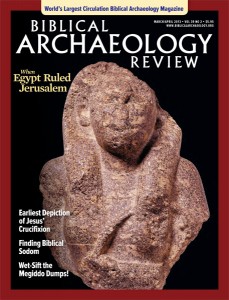
Archaeologists who work in the Holy Land, and especially those who deal with the Iron Age, are well aware of the often-uneasy relationship that exists among archaeology, history and the Bible. In this excerpt from a presentation to the British Academy,1 prominent Israeli archaeologist Amihai Mazar of the Hebrew University of Jerusalem discusses the various ways scholars have chosen to grapple with these competing forces.
There are five major ways to evaluate the Biblical text in reconstructing the history of Israel during the Iron Age [twelfth–sixth centuries B.C.E.]. An archaeologist like myself, who is an outsider to textual research and who wishes to study the Iron Age of the southern Levant [including Israel], must make a choice. There are five major possibilities as follows:
1. Accepting the bulk of the information in the Bible as credible and attempting to fit the archaeological data to the Biblical text.
2. Claiming that the entire Biblical narrative is useless as a source for writing a history of Biblical Israel. If this claim is accepted, archaeology and external sources (many of them suspected as biased) remain the sole source of reconstructing some kind of history.
3. Claiming that as archaeologists, we should limit ourselves to our trade—the reconstruction of social and economic changes based on the study of material culture alone—and should not intervene in historical discussions.
Already a library member? Log in here.
Institution user? Log in with your IP address.

